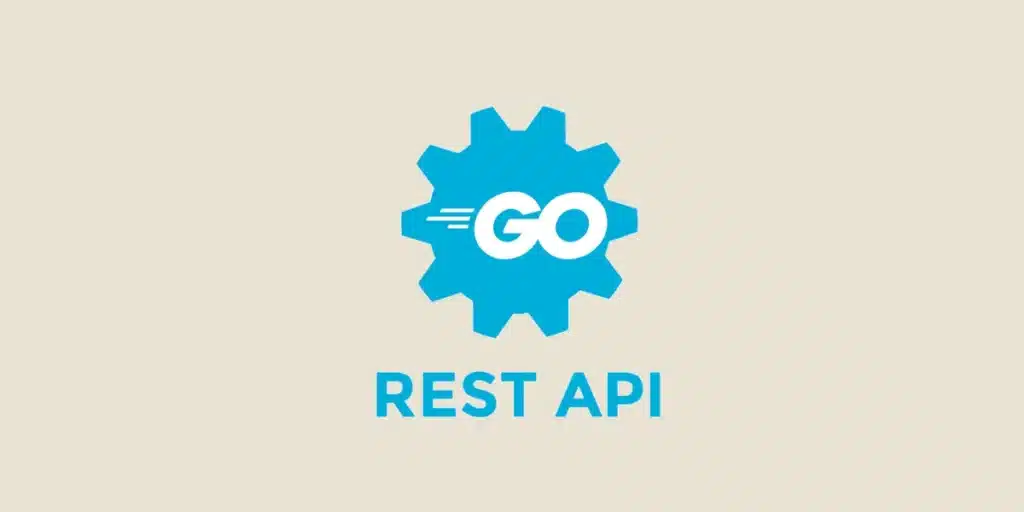There are numerous programming languages available for building APIs, with Go (often referred to as Golang) gaining popularity for its simplicity and performance.

To recap, a REST API (which stands for Representational State Transfer Application Programming Interface) is an interface that enables two applications to communicate with each other via standard HTTP requests. It adheres to principles such as using resources identified by URIs and performing stateless operations.
Why Opt for Go for a REST API?
Go, a modern language created by Google, is often praised for its execution speed and efficiency in handling concurrency (which refers to managing task parallelism). These traits make it an excellent choice for developing robust and efficient REST APIs. Additionally, learning how to develop an API in Go is relatively straightforward due to the extensive documentation available and the numerous resources found online.
Building a REST API in Go
1. Setting Up and Configuring the Environment
go version
2. Project Creation
The next step is to create a Go project and initialize the modules using the following command:
mkdir api-rest-go && cd api-rest-go
go mod init api-rest-go
3. Implementing a Basic Route
To construct a REST API, you need to create routes that handle various HTTP requests (specifically GET, POST, PUT, DELETE). Go’s native “net/http” package allows for easy route creation.
Here is how to create a simple entry point for the API:
package main
import (
"fmt"
"net/http"
)
func main() {
http.HandleFunc("/", func(w http.ResponseWriter, r *http.Request) {
fmt.Fprintf(w, "Welcome to a REST API in Go!")
})
http.ListenAndServe(":8080", nil)
}
In this code, we use the “HandleFunc” function from the “net/http” package to create a route at the root URL “/” that returns a simple welcome message. “ListenAndServe” starts an HTTP server on port 8080.
4. Adding a GET Route for Data Retrieval
Retrieving data is one of the most common operations in a REST API. Let’s add a GET route to our API.
func getItems(w http.ResponseWriter, r *http.Request) {
if r.Method != "GET" {
http.Error(w, "Invalid request method", http.StatusMethodNotAllowed)
return
}
fmt.Fprintf(w, "Here are the available items.")
}
func main() {
http.HandleFunc("/items", getItems)
http.ListenAndServe(":8080", nil)
}
In this part, we introduced a new “/items” route that returns a message indicating that items are available.
Managing Data with POST Requests
To enable the API to receive data, we must implement a route that accepts POST requests. Here’s an example:
func createItem(w http.ResponseWriter, r *http.Request) {
if r.Method != "POST" {
http.Error(w, "Invalid request method", http.StatusMethodNotAllowed)
return
}
fmt.Fprintf(w, "Item successfully created!")
}
func main() {
http.HandleFunc("/items", getItems)
http.HandleFunc("/items/create", createItem)
http.ListenAndServe(":8080", nil)
}
Boosting API Performance
As a compiled language, Go offers superior performance compared to interpreted languages. Utilizing Go’s goroutines allows for managing thousands of concurrent API calls without degrading performance.
Advanced Features
The functionalities of a REST API can vary according to application requirements. Here are some common features that might be implemented:
- Authentication and Authorization: Implement systems like JWT tokens for authentication and manage authorizations.
- Error Management: Return the appropriate HTTP status codes.
- Pagination: For large data retrieval, pagination divides responses into smaller parts, enhancing performance and user experience.
- Filtering and Sorting: Adding parameters to filter and sort the returned data is recommended to make the API more adaptable to different user requirements.
- Caching: Caching responses that don’t change often reduces server load and improves response times.
- Data Validation: Validating inputs server-side is advisable, using libraries to verify data received through POST or PUT requests.
- Audit Trail: Establishing an audit mechanism to track actions done via the API will let you understand what was done, when, and by whom, which can be beneficial in case of issues or compliance requirements.
API Documentation
Documentation is a crucial aspect of any REST API. Clear documentation ensures developers can integrate your API easily and without confusion. For a REST API in Go, you can use tools like Swagger or Postman to document and test your endpoints. Providing comprehensive information on each route, including supported methods (GET, POST, etc.), required parameters, expected data structures, and request/response examples, is vital.
Conclusion
Developing a REST API with Go is growing in popularity, particularly for those seeking enhanced performance and efficient resource management. If you want to explore further, you could look into frameworks like Gorilla Mux to make route creation more flexible, or even incorporate features such as API Key authentication.










